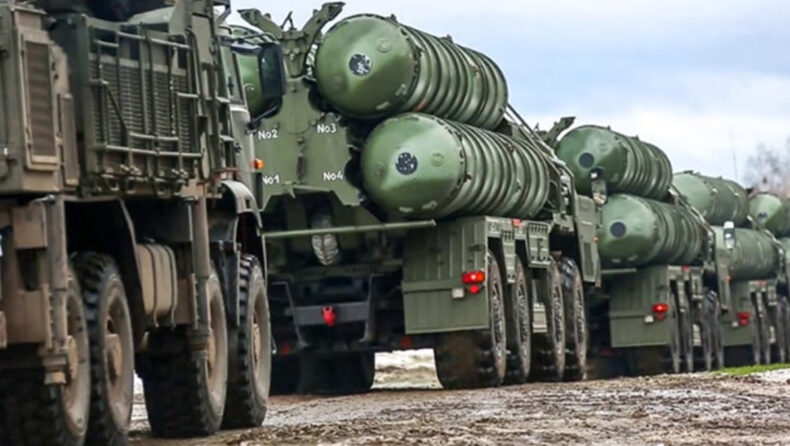Pakistan presently has around 170 nuclear weapons, and depending on the present rate of proliferation, this number could perhaps climb to over 200 by the year 2025, calculates leading American nuclear experts.

Table of Contents
Pakistan’s Increasing Nuclear Warhead Inventory
“We believe that Pakistan currently has a nuclear arsenal inventory that consists of roughly 170 warheads,” the Nuclear Notebook column, which originally appeared in the Bulletin of the Atomic Scientists on September 11 and was cited by PTI, said. In 1999, the US Defence Intelligence Agency predicted that Pakistan would possess 60 to 80 warheads by 2020, but since then, a number of new weaponry have been deployed and constructed, therefore our estimate has increased.
The Nuclear Information Project, a division of the Federation of American Scientists produces a function called The Nuclear Notebook. Hans M. Kristensen, the project director, Senior Research Fellow Matt Korda, and Research Associate Eliana Johns are the authors. Notably, the Nuclear Notebook article has been published on a consistent basis in the Bulletin of the Atomic Scientists since 1987.
According to the experts, “our assessment includes significant uncertainty since neither Pakistan nor other nations disclose extensive data about the Pakistani nuclear arsenal.”
The Nuclear Notebook used a technique that depended on a combination of freely available resources for their estimations and analytical work because there was insufficient reliable data from sites within Pakistan, according to PTI.
Their source material included both state-originating data (such as official statements, declassified papers, financial details, military performances, and treaty publication data) and non-state-originating data (such as media reports, think tank analyses, and industry publications). It’s noteworthy that they additionally heavily included commercial imagery from satellites in their research resources.
“All of the aforementioned sources offer unique, constrained knowledge that is unclear to varying degrees. When feasible, we added private interactions with authorities to the mix of information we used to double-check each piece of information, the trio stated.
Can Pakistan’s Rising Inventory Compete With India?
The Nuclear Notebook said that Pakistan’s inventory has the capacity to grow substantially over the next years due to a number of novel delivery methods being developed, four plutonium manufacturing reactors, and an increasing uranium enrichment equipment.
The number of nuclear-capable launchers Pakistan intends to implement, the development of its nuclear policy, and the extent of the Indian nuclear arsenal would all have an impact on the expected increase’s magnitude. At the present growth pace, we project that the nation’s stockpile might reach about 200 weapons by the end of the 2020s,” the researchers said.
“But it appears plausible to anticipate that Pakistan’s nuclear arsenal is not going to continue to expand eternally but could start to level off as its current weapons initiatives are completed,” they said. “Unless India substantially boosts its arsenal or continues to build up its conventional forces.”
The scientists included an explanation even though the document stated fissile material manufacturing and storage from publicly accessible sources: “Estimating stockpile size using only information on fissile material stock is an insufficient technique that frequently overestimates the probable amount of nuclear warheads.”
They said, “While we believe that the ultimate warhead expansion in the stockpile likely averages about 5 to 10 warheads per year, we calculate that Pakistan now is manufacturing adequate fissile material to create 14 to 27 additional warheads per year.
Ballistic Missiles And Weaponry
The Nuclear Notebook collected data on an aggregate of 36 aircraft, notably Mirage III/IV and JF17s, in a thorough investigation of nuclear-capable aircraft and air-delivered weapons. In the group of land-based ballistic missiles, it also included information on six currently in use solid-fuel, road-mobile ballistic missile systems.
These comprised the medium-range Ghauri (Hatf-5) and Shaheen-II (Hatf-6), the short-range Abdali (Hatf-2), Ghaznavi (Hatf-3), Shaheen-I/A (Hatf-4), and Nasr (Hatf-9).
The Nuclear Notebook commented on the Ababeel medium-range ballistic missile from 2017, which Pakistan claimed is “worthy of transporting multiple warheads, using several self-sufficient reentry vehicle (MIRV) technology,” noting that the multi-warhead power “seems to be aimed as a defensive measures against India’s planned ballistic missile defence system.” As of July 2024, its situation is uncertain.
The document stated, “Analysis of commercial satellite imagery indicates that Pakistan maintains a minimum of five missile bases that might play a function in Pakistan’s nuclear forces.” It also noted that the full number and location of Pakistan’s nuclear-capable missile bases and amenities are still unidentified. Following that, it listed the garrisons in the following order, along with their locations, further information, and satellite visuals: Akro Garrison, Gujranwala Garrison, Khuzdar Garrison, Pano Aqil Garrison, and Sargodha Garrison, according to PTI.
Conclusion
The scientists acknowledged that there is little information available to the general public concerning the manufacture of warheads, but added: “But specialists have long speculated that the Pakistan Ordnance Factories near Wah, northwest of Islamabad, play an important part. An unusual structure with six earth-covered bunkers (igloos) inside of an intricate security barrier and armed guards is next to one of the Wah industries.













